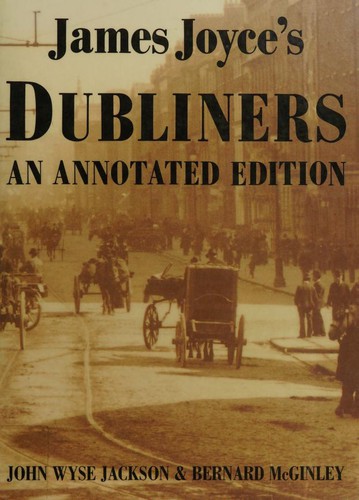Hardcover, 200 paĝoj
Lingvo: English
Eldonita je 6-a de aŭgusto 1993 de Sinclair-Stevenson.

Hardcover, 200 paĝoj
Lingvo: English
Eldonita je 6-a de aŭgusto 1993 de Sinclair-Stevenson.
JAMES JOYCE'S collection of short stories, Dubliners, is the first of his four masterpieces. Gaslit. turn-of-the-century Dublin is the setting for these fifteen explorations of human behaviour, The stories, which end with the brilliantly elegiac 'The Dead'. are both simple and complex. Linked by theme, detail, character and place, together they form a timeless circular novel.
There is something more. Behind everything Joyce wrote lay a shadowy world — Dublin's customs, gossip, music, misery. its jokes and idioms. its sins and its social nuances. It was a world that had a unique physical, mental and literary landscape — one now almost forgotten. Here, in words and pictures, side by side with a new and carefully edited version of the work, this lost aspect of Dubliners is magnificently restored to view.
Desire, dishonesty, politics, religion, humour and even murder inform the stories. Overlooked ironies and unrecorded crises are rediscovered in these …
JAMES JOYCE'S collection of short stories, Dubliners, is the first of his four masterpieces. Gaslit. turn-of-the-century Dublin is the setting for these fifteen explorations of human behaviour, The stories, which end with the brilliantly elegiac 'The Dead'. are both simple and complex. Linked by theme, detail, character and place, together they form a timeless circular novel.
There is something more. Behind everything Joyce wrote lay a shadowy world — Dublin's customs, gossip, music, misery. its jokes and idioms. its sins and its social nuances. It was a world that had a unique physical, mental and literary landscape — one now almost forgotten. Here, in words and pictures, side by side with a new and carefully edited version of the work, this lost aspect of Dubliners is magnificently restored to view.
Desire, dishonesty, politics, religion, humour and even murder inform the stories. Overlooked ironies and unrecorded crises are rediscovered in these pages, in an edition which seeks, as far as possible, to establish a text which reflects Joyce 's intentions. The notes and illustrations illuminate Joyce's Dublin from the inside, helping to make the city as familiar to the modern reader as it was to the author's contemporaries.
The book is, in short. a lavish exploration and celebration Of the first full-scale work of the century's greatest novelist and of the city he hated and loved. --front flap